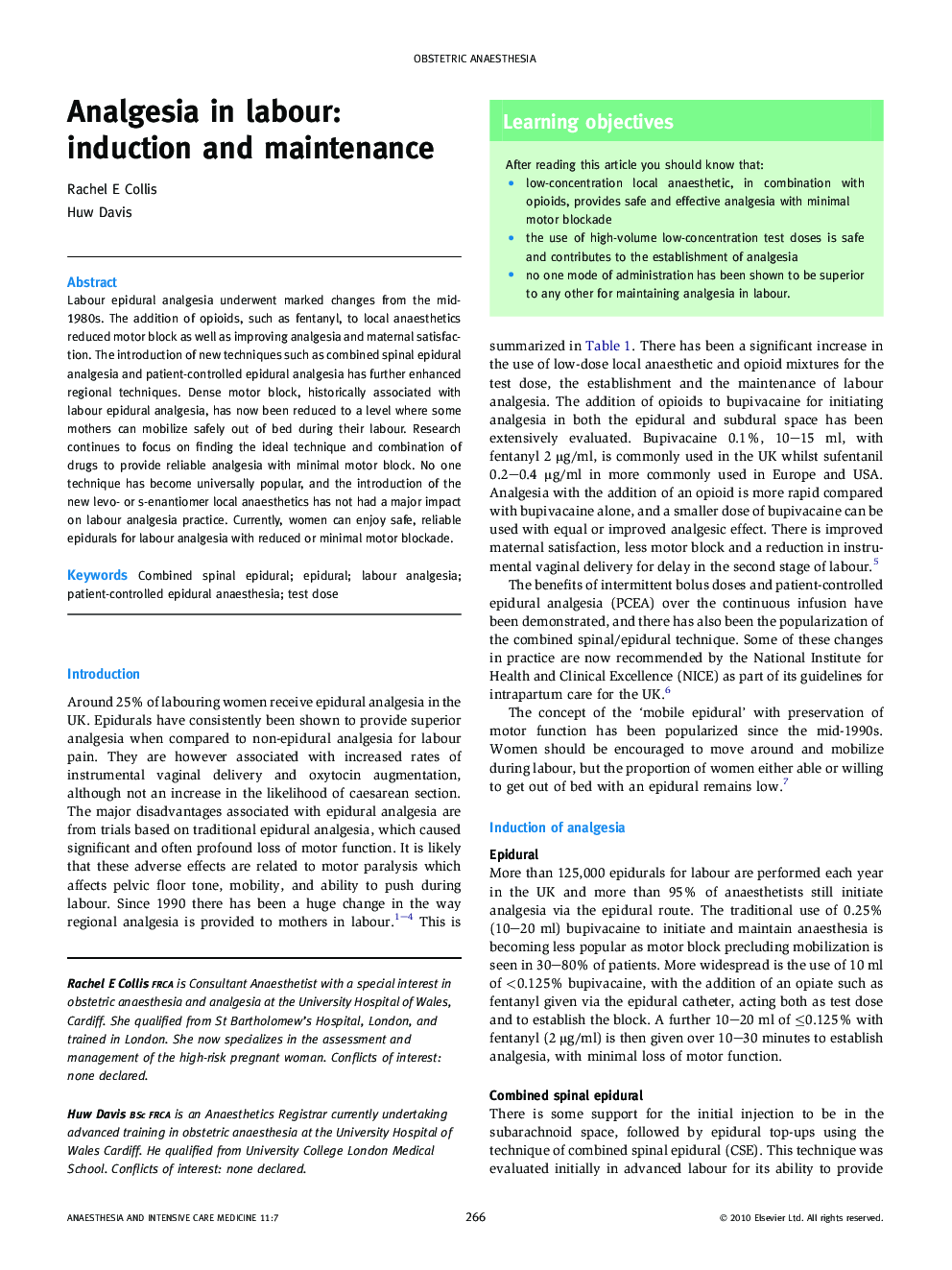| Article ID | Journal | Published Year | Pages | File Type |
|---|---|---|---|---|
| 2743001 | Anaesthesia & Intensive Care Medicine | 2010 | 4 Pages |
Labour epidural analgesia underwent marked changes from the mid-1980s. The addition of opioids, such as fentanyl, to local anaesthetics reduced motor block as well as improving analgesia and maternal satisfaction. The introduction of new techniques such as combined spinal epidural analgesia and patient-controlled epidural analgesia has further enhanced regional techniques. Dense motor block, historically associated with labour epidural analgesia, has now been reduced to a level where some mothers can mobilize safely out of bed during their labour. Research continues to focus on finding the ideal technique and combination of drugs to provide reliable analgesia with minimal motor block. No one technique has become universally popular, and the introduction of the new levo- or s-enantiomer local anaesthetics has not had a major impact on labour analgesia practice. Currently, women can enjoy safe, reliable epidurals for labour analgesia with reduced or minimal motor blockade.
